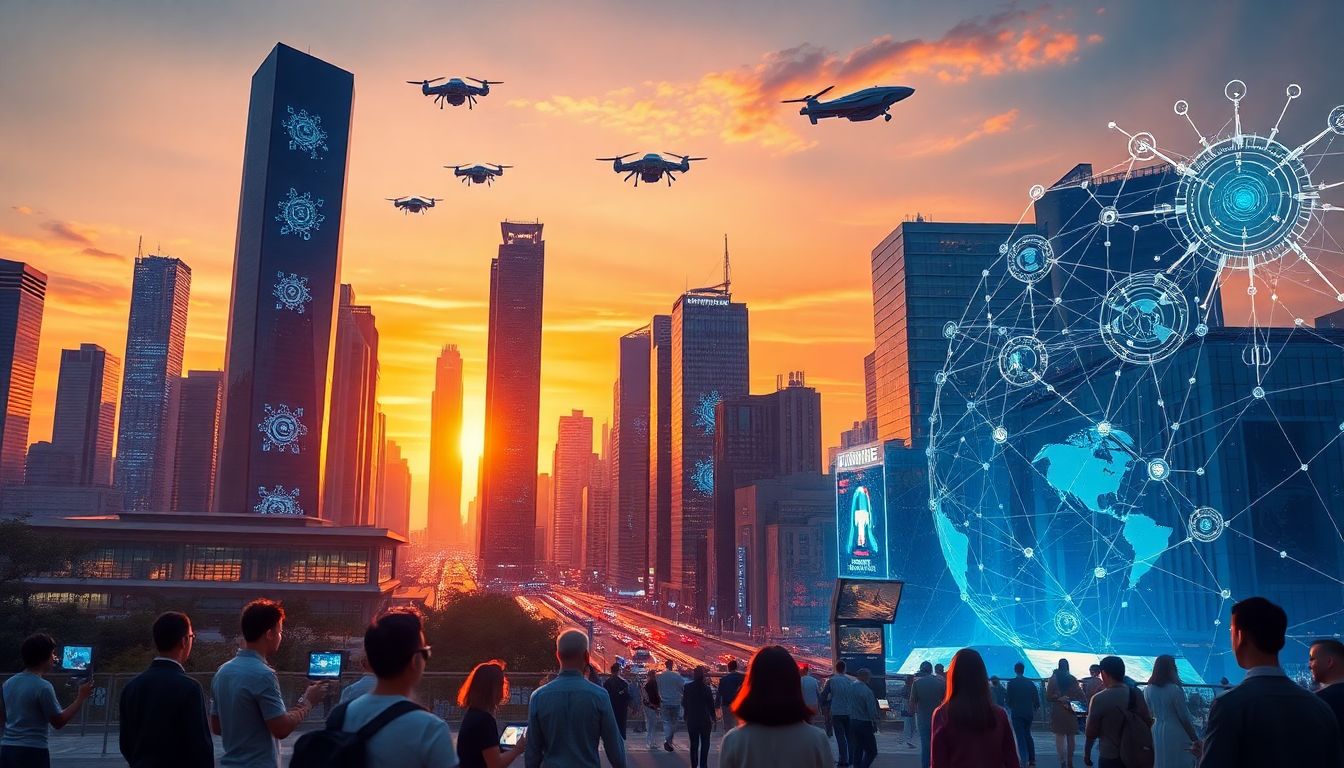
How AI Has Transformed Over the Past Years: A Comprehensive Evolution
Introduction
Artificial Intelligence has grown faster and become more important in recent years. It now plays a big role in industries, daily life, and tech breakthroughs. From smarter phones to life-saving medical tools, AI is everywhere. Its rapid changes shape how we work, learn, and connect. This article will explore how AI has changed recently, backed by data, examples, and expert insights.
The Evolution of AI Technologies
Breakthroughs in Machine Learning and Deep Learning
AI’s biggest leaps come from advances in machine learning and deep learning. These are ways computers learn from data without being told exactly what to do. Over time, algorithms improved, becoming more accurate and faster. The progress was clear with models like GPT and AlphaFold. GPT models can write stories or answer questions better than before, while AlphaFold predicts protein structures, speeding up medical research.
The Rise of Neural Network Architectures
Neural networks are the brain behind modern AI. They started simple, then grew more complex with new designs like transformers. These architectures help computers understand language and images much better. For instance, BERT improved language understanding, and GPT-3 can generate detailed text. These innovations made AI smarter at handling real-world tasks, from chatting to recognizing objects.
Adoption of AI in Edge Computing and IoT
More AI is now running on small devices close to us. We see this in smart speakers, cars, and factory sensors. This move to the edge means AI reacts faster and keeps data private. For example, autonomous cars analyze surroundings instantly, making quick decisions. It also reduces lag and keeps personal info safer, opening new opportunities for real-time solutions.
Major Shifts in AI Applications
AI in Healthcare and Medical Research
AI is changing medicine fast. It helps diagnose diseases, find new drugs, and personalize treatments. Tools like AI-powered radiology software detect cancer more accurately, saving lives. During COVID-19, AI models tracked the spread and sped up vaccine research. Now, AI-driven insights help doctors give better care faster.
AI in Business and Industry
Many companies use AI to make work easier. Customer service, delivery, and planning now depend on smart systems. Chatbots handle questions, while recommendation engines suggest products. AI also automates routine tasks, boosting productivity. It helps companies save money and work more efficiently, giving them a competitive edge.
AI and Creative Industries
Creativity gets a boost from AI as well. Artists create new types of art with AI tools, and musicians compose original music. In film, AI helps edit movies or generate special effects. However, this raises questions about ownership and ethics. As AI becomes part of our creative world, so do new debates on originality and rights.
AI in Cybersecurity and Defense
AI keeps digital spaces safer. It spots malware, detects unusual activity, and even fights cyberattacks. Countries now use AI to defend against threats and improve national security. But attackers also use AI to craft more convincing scams. This creates a constant arms race between security teams and hackers.
Ethical, Legal, and Societal Implications
Emerging Ethical Concerns
As AI gets smarter, worries grow about bias and fairness. Sometimes AI favors certain groups or makes unfair choices, especially if trained on biased data. Privacy is also a concern, with AI collecting large amounts of personal info. Experts say we need clear rules and transparency to develop responsible AI.
Legal Frameworks and Regulations
Laws are catching up with AI. The GDPR in Europe protects personal data, and proposals like the AI Act aim to regulate AI use. These rules try to balance innovation with safety. They also push companies to be more transparent about how they use AI.
Society’s Adaptation to AI Changes
AI is changing jobs and skills needed in the workplace. Some roles become obsolete, but new ones appear. Education must adapt, teaching skills like critical thinking and digital literacy. Preparing workers for these changes is essential for a smooth transition.
The Future Outlook of AI
Ongoing and Upcoming Innovations
Looking ahead, general AI might become a reality soon. This type of AI can understand and perform any intellectual task humans can. Exciting tech like quantum computers and federated learning could make AI smarter and more private. We might see autonomous systems that operate more independently, transforming everyday life.
Challenges and Risks Ahead
As AI grows stronger, so do concerns about misuse, control, and ethics. Powerful AI could be used maliciously or behave unpredictably. International cooperation and strict policies are crucial to prevent harm. We need clear standards to keep AI safe and beneficial.
Actionable Tips for Stakeholders
Everyone involved—developers, governments, and users—must promote responsible AI. Invest in research for ethical tech and support policies that guide fair use. Education systems should prepare students for an AI-driven world. We all share the goal of making AI work for good.
Conclusion
AI has changed a lot in just a few years. It now helps in medicine, businesses, creativity, and security. Every breakthrough pushes us toward a smarter, more connected world. But with this power comes responsibility. We must keep pushing for innovation while respecting ethics and laws. Stay curious, support responsible AI development, and adapt to the changes ahead. The future of AI depends on how we choose to use it.


0 Comments